45% increase in productivity thanks to a circular project
Construcía's offices were recognized by Leesman in 2019 as one of the top twenty companies in the world in terms of employee satisfaction
“FINSA'S C2C OR POSSIBLE L2C PRODUCTS GUARANTEED THAT WE WERE ABLE TO BUILD A HEALTHY ENVIRONMENT, FOLLOWING THE COMPANY'S COMMITMENT TO ELIMINATE TOXIC SUBSTANCES”
Antonio Bernal, Director of Innovation and Lean2Cradle® for CONSTRUCÍA.
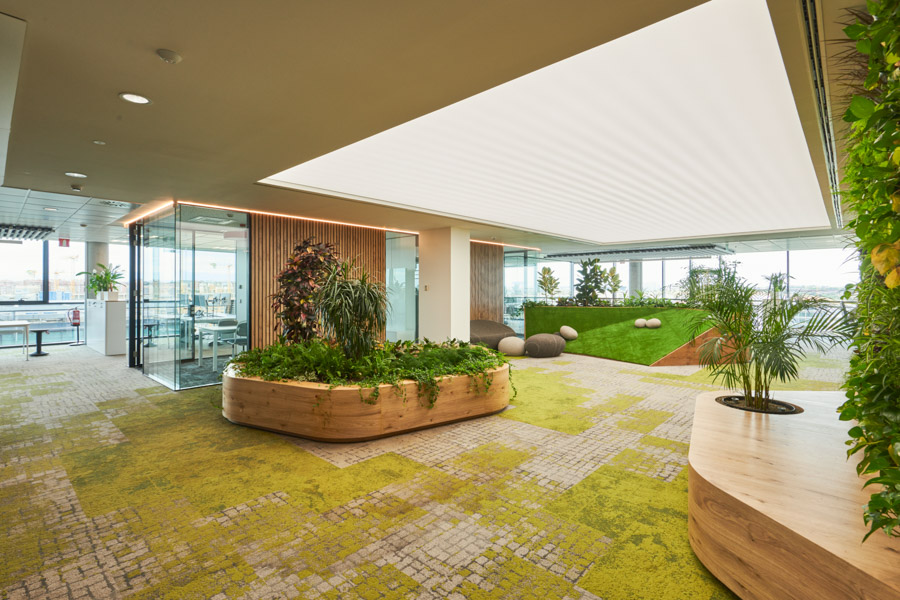
What is the difference between a conventional office and one that is designed with circularity criteria? The main difference is that a circular office has a positive and measurable impact on people, society, the economy and the environment, while a conventional office only aims to reduce the negative impact that it has. Implementing circularity criteria allows healthier spaces to be obtained, which results in an improvement in people's productivity. Construcía Group, one of the leading companies in terms of circularity, has developed the necessary tools to establish metrics that reflect the positive impact circular spaces have. One of them is the True Value L2C, which reflects a 45% increase in productivity within offices that are created in line with the criteria of circular construction, in comparison to a conventional office.
One example of good practice is its offices in Madrid, where it sought to create a space that would add up; an optimal environment that would allow the staff to carry out their work in the best possible way. To do so, they used the Lean2Cradle® methodology. This is the first methodology that is capable of designing and measuring the impact of this influence on users, allowing them to build in manner that is healthy, efficient and waste-free, based on the principles of Cradle to Cradle (C2C) and the Lean Construction methodology.
In this case, it is undeniable that the materials played a major role. “The use of FINSA's C2C or possible L2C products guaranteed that we were able to follow these guidelines and build a healthy environment, following the company's commitment to circularity. This guaranteed the future cycles of the installed products, and eliminated toxic substances”, answers Antonio Bernal, Director of Innovation and L2C for the Construcía Group.
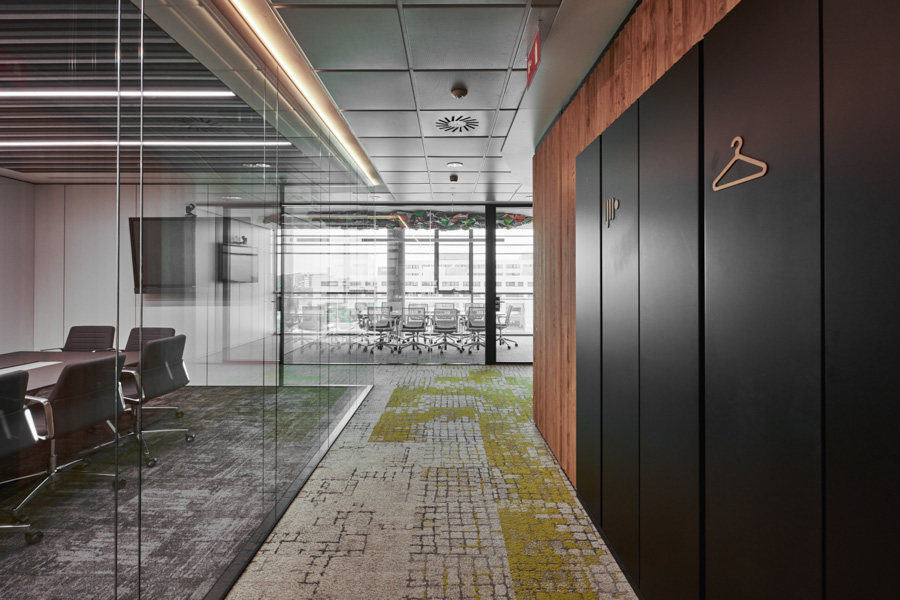
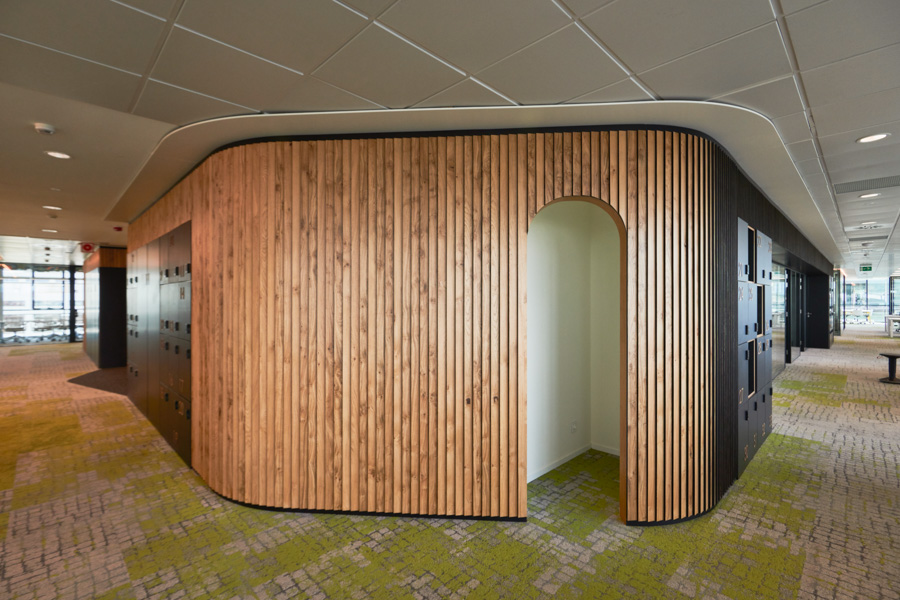
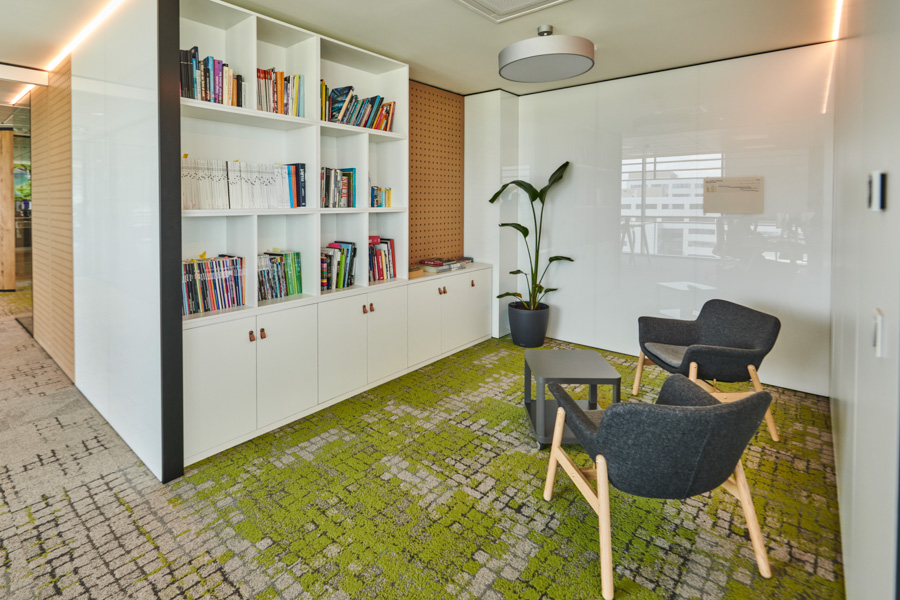
Fibracolour applied on lockers and planking.
63,500 kg of materials were installed in the project, 99% of which have a defined recycling path. 95.5% were C2C certified, or were in the process of certification, or were validated in line with C2C Certified Basic. This means that their compliance with health standards was guaranteed. All this, while also creating a space that has no restrictions in terms of design or functionality, and which is within market costs and the highest standards of circularity.
As we said, the material highlighted the nature of the offices. The technical wood ensured the traceability of the product, from its origin, through manufacturing, to installation. In turn, it contributed to the implementation of some of the criteria of the Lean2Cradle® methodology, such as the improvement of air quality and health, acoustic improvements, and a negative impact on the carbon footprint or biophilia, as it is a natural product.
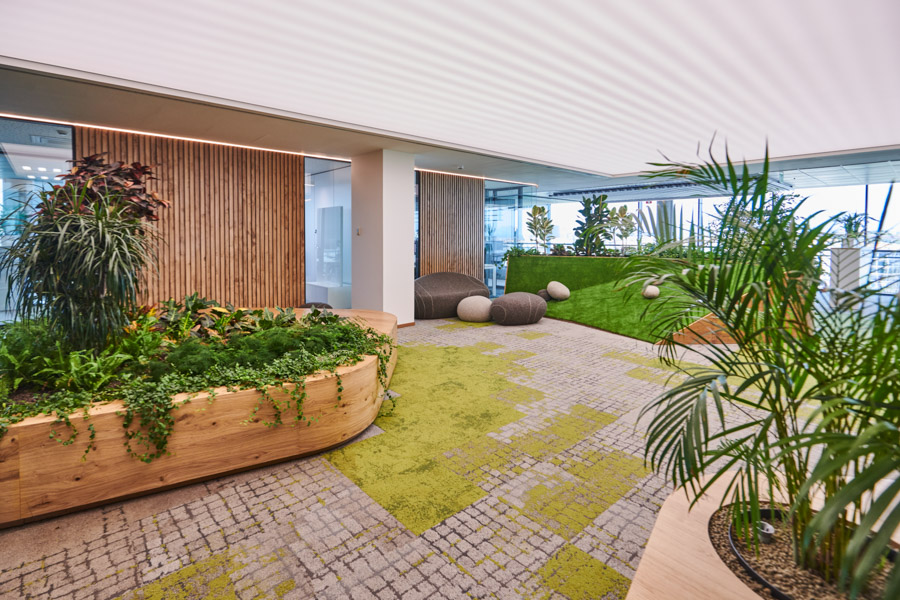
What was the advantage of using technical wood in this refurbishment? Estal used superPan Tech P6 due to its particular qualities: it provides a strong surface with low thickness and great variability in terms of its use (stair treads, handrails and floor slabs).
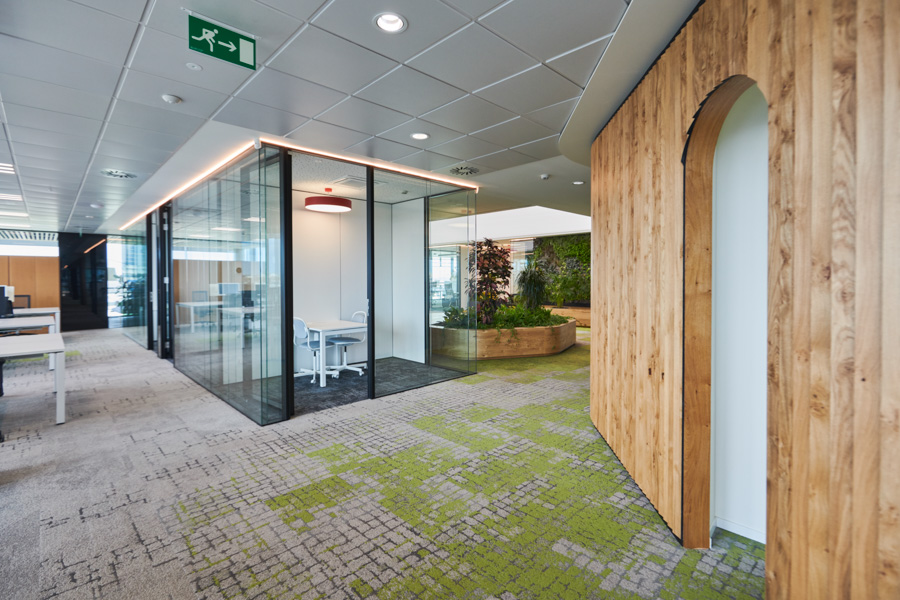
Oak veneer MDF used in the office furniture and water-repellent oak veneer MDF applied in planters.
What are the keys to this design? “First and foremost, the architectural strategy”, Antonio specifies. “The project involved an honest commitment to human development and social stability, optimising resources and materials, minimising energy consumption as far as possible, promoting renewable energy, minimising waste and emissions as far as possible, and improving both the functionality and cost-effectiveness of the buildings and the quality of life of their occupants,” he summarises.
The intention was not simply to create a workspace, and definitely not a conventional office. The aim was to build “an environment that would have a positive impact from an environmental, social and economic point of view,” explains Antonio. FINSA's advice on the suitability of products for each construction solution was vital in achieving this aim, as they jointly developed improvements in the products that were installed.
As part of its commitment to sustainability and human well-being, Construcía carried out an analysis with Leesman prior to the creation of its offices in order to identify the needs of the employees, and another analysis later on in order to establish the users’ level of satisfaction in relation to the requests made. This meant that they achieved a Leesman Score of 76.3 points, making them one of the top 20 companies in the world. In turn, Leesman issued a special recognition within Europe through Exceptional Performance.
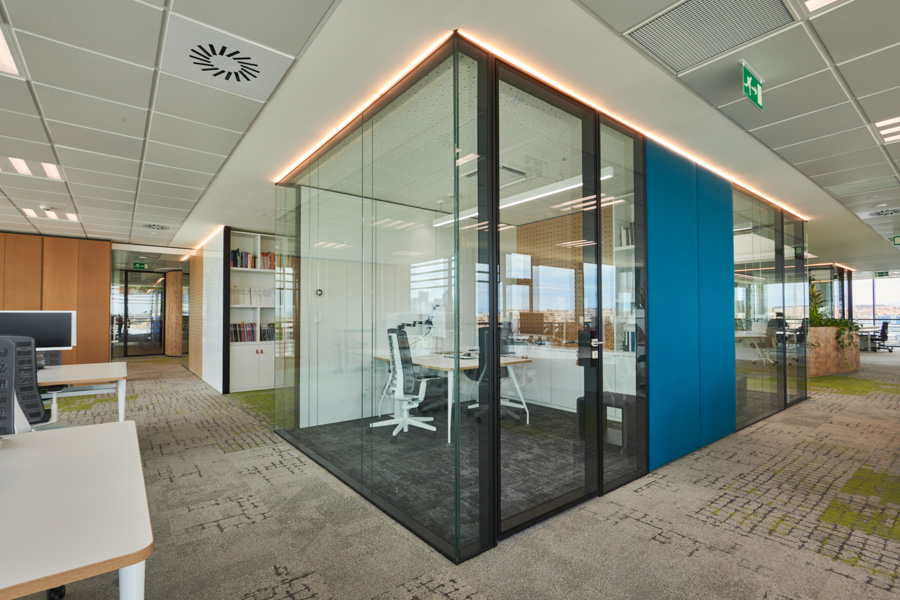
Natural MDF in cupboards, white melamine-finished MDF in blind partitions and natural MDF in perforated panels.
The recognition is, without a doubt, well-deserved. Here we have a practical analysis of a circular company that is leading by example from its own offices, and a real guide as to how to create a corporate space that has a positive impact on people, society and the environment.
If you enjoyed this case study, let us know what you thought of it on Facebook, Instagram, LinkedIn or Twitter.